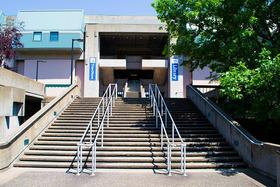- Erie Institute of Technology is a premier educational facility providing training for the cutting-edge technological careers of tomorrow. EIT is dedicated to developing the individual abilities of each student by providing them with the necessary skills and supporting knowledge to meet the job-entry level requirements in the fields of electronics, computers and business. In order to achieve this, programs at EIT provide students with a combination of practical laboratory training and classroom instruction. EIT then offers placement assistance to aid its graduates in locating gainful employment.
School Highlights
Erie Institute of Technology Inc serves 265 students (100% of students are full-time).
The college's student-teacher ratio of 6:1 is lower than the state community college average of 15:1.
Minority enrollment is 35% of the student body (majority Black), which is less than the state average of 48%.
Quick Facts (2025-26)
- Enrollment: 265 students
- Private-state tuition: $13,770
- Student-teacher ratio: 6:1
- Minority enrollment: 35%
- Source: Integrated Postsecondary Education Data System (IPEDS)
Top Rankings
Erie Institute of Technology Inc ranks among the top 20% of public schools in Pennsylvania for:
Category
Attribute
Debt For Students
School Overview
The teacher population of 45 teachers has stayed relatively flat over five years.
Erie Institute of Technology Inc
(PA) Community College Avg.
Carnegie Classification
Special Focus Two-Year: Technical Professions
Not applicable, not in Carnegie universe (not accredited or nondegree-granting)
Institution Level
At least 2 but less than 4 years
At least 2 but less than 4 years
Institution Control
Private for-profit
Private not-for-profit
Total Faculty
45 staff
59 staff
School Calendar
Student Body
The student population of Erie Institute of Technology Inc has grown by 17% over five years.
The student-teacher ratio of 6:1 has stayed the same over five years.
The Erie Institute of Technology Inc diversity score of 0.52 is less than the state average of 0.68. The school's diversity has grown by 63% over five years.
Total Enrollment
265 students
461 students
Student-Teacher Ratio
6:1
15:1
# Full-Time Students
265 students
325 students
# Part-Time Students
n/a
136 students
# Enrollment Undergraduate
265 students
298 students
# Full-Time Undergraduate Students
265 students
326 students
# Full-Time Graduate Students
n/a
10 students
# Part-Time Undergraduate Students
n/a
151 students
# Part-Time Graduate Students
n/a
12 students
Total Dormitory Capacity
n/a
330 students
% American Indian/Alaskan
1%
n/a
% Asian
2%
5%
% Hispanic
2%
11%
% Black
8%
15%
% White
65%
52%
% Hawaiian
22%
3%
% Two or more races
n/a
3%
% Non Resident races
n/a
1%
% Unknown races
n/a
10%
Diversity Score
0.52
0.68
College Completion Rate (Students who graduate in less than 4 years)
70%
60%
College Completion Rate (Students who graduate in 4 years or more than 4 years)
n/a
36%
Average Graduate Earnings (10 Years)
$36,300
$34,900
Tuition and Acceptance Rate
The private state tuition of $13,770 is less than the state average of $17,231. The private state tuition has declined by 7% over four years.
Private State Tuition Fees
$13,770
$17,231
% Students Receiving Some Financial Aid
94%
88%
Median Debt for Graduates
$11,032
$13,000
Median Debt for Dropouts
$3,705
$6,260
Acceptance Rate
n/a
78%
SAT Reading
n/a
460
SAT Math
n/a
470
SAT Writing
n/a
435
ACT Composite
n/a
20
ACT English
n/a
20
ACT Math
n/a
21
ACT Writing
n/a
7
Source: 2024 (or latest year available) Integrated Postsecondary Education Data System (IPEDS)
School Notes
- The most important prerequisites of a student are good attitude and initiative. EIT's overall objective and philosophy is to combine these attributes with the school's programs to help individuals toward a career in the fields of electronics, computers or business. Erie Institute of Technology, formerly known as American Television Electronics School (A.T.E.S.), founded in 1958, is an end product of many years of experience and planning in the field of technical education. In 1976, the school name was changed to Erie Institute of Technology and was incorporated with the principal officers being Clinton L. Oviatt, Jr. and Charles J. Wettekin. Roger C. Scarlett became an additional officer of the corporation in 1993. In the fall of 2001, EIT was acquired by Rick Griffith -- owner of Great Lakes Institute of Technology. The Institute moved to EBCO Park in 1981. In 1986, EIT was authorized by the Commonwealth of Pennsylvania, Department of Education to award the Associate in Specialized Technology Degree for an expanded curriculum in Electronic Engineering Technology. A new modern facility was built in the Fall of 2001 at 5539 Peach Street -- conveniently located near the Millcreek Mall and the Great Lakes Institute of Technology Main Campus -- ready for the Winter 2002 term. EIT is accredited by the Accrediting Commission of Career Schools and Colleges of Technology. The Accrediting Commission of Career Schools and Colleges of Technology is listed by the U.S. Department of Education as a nationally recognized accrediting agency.
Frequently Asked Questions
How much does Erie Institute of Technology Inc cost?
Erie Institute of Technology Inc's private state tuition is approximately $13,770.
What schools are Erie Institute of Technology Inc often compared to?
Erie Institute of Technology Incis often viewed alongside schools like Erie Institute Of Technology (EIT) by visitors of our site.
What is Erie Institute of Technology Inc's ranking?
Erie Institute of Technology Inc ranks among the top 20% of community college in Pennsylvania for: Least debt for graduating students.
Recent Articles

Student Success Programs That Actually Work at Community Colleges
Discover evidence-based student success programs at community colleges for 2025, with outcomes, examples, and actionable strategies.

Best Community Colleges by Career Path in 2025
Explore top community colleges for career-training programs in 2025, including healthcare, IT, skilled trades and business pathways.

Dual Enrollment in High School: Benefits, Risks & Real Student Results
Explore the pros and cons of dual enrollment in high school, real outcomes for students in 2025, and how to decide if it’s right for you.





